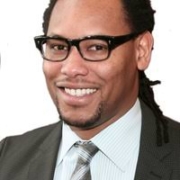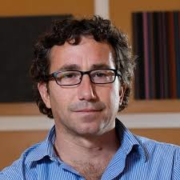Marianne Larsen
Space in educational research
Today’s topic is space in educational research.
My guest is Marianne Larsen, an Associate Professor at the Faculty of Education, University of Western Ontario. Dr. Larsen’s recent research focuses on the overall processes and effects of the internationalization of higher education. She has been researching how internationalization policies are taken up ‘on-the-ground’, as well as the role of higher education leaders in advancing internationalization agendas.
Her most recent book, Internationalizing Higher Education: An Analysis through Spatial, Mobility and Network Theories builds upon her work to advance the use of new spatial and mobilities theories in comparative education research.
I spoke with Dr. Larsen in 2016 about how she and her colleague Jason Beech theorize the concept of educational space not as an object of study but as a set of relations between individuals and groups. Their articles on new spatial thinking can be found in the 2014 Spring issue of European Education and the May 2014 issue of Comparative Education Review.
Citation: Marianne, Larsen, interview with Will Brehm, FreshEd, 5, podcast audio, November 23, 2015. https://freshedpodcast.com/marianne-larsen/
Will Brehm 1:59
Marianne Larsen, welcome to FreshEd,
Marianne Larsen 2:02
Thank you for inviting me. I’m glad to be here.
Will Brehm 2:06
In one of your most recent pieces in the Comparative Education Review, you write about new spatial thinking in comparative ed. The ideas of space and place, they can be quite difficult concepts to grasp in educational research. Often, educational place is thought of as sites in schools and space is often this more abstract concept, and more difficult to deal with. You take a slightly different approach than seeing space and place as objects. How would you define space and spatial for newcomers in comparative education?
Marianne Larsen 2:46
Thanks Will. That’s a really great questions to start with. Before I answer it, I want to thank and acknowledge Jason Beech. Jason and I are co-conspirators in what we call our spatial interventions in the field of comparative and international education. So he was the co-author of the piece that you mentioned, and much of my thinking was influenced by conversations that I had with him across space, and across time. He’s based at the University of San Andreas in Argentina. So thank you, Jason. I’m gonna go back to the question: What is space? And I’ll try my best to answer it by pointing to a couple of, I don’t know, key concepts or key ideas. One of them – and this is really what it is, in a nutshell, for me – is that space is that thing, that which is produced through social practices, through relationships, through how we relate or connect to one another. And in turn, the space that is created, it enables and constrains who we are, what we are, how we act, how we relate to one another. So I’m thinking about this, very much so in the context of this interview, which is something new for me. I’ve never done a podcast before, and I rarely use Skype. So right now, it’s late morning for you over there in Tokyo and it’s late evening for me here in London, Canada. And there are a number of material objects that are connecting us. There’s our computers, the program Skype, the microphone, all the other things that you sort of went over with me before the interview. And all of those technologies, they are enabling us to have a conversation, to have a connection, to be related in this moment. And it is that space in between, that space in the interaction that is created through those technologies, through those material objects that I call space. And that space is what enables the creation of knowledge, of ideas, of what we call subjectivities and identities. So, you know, I’m a little bit nervous, I admit. And so the space is actually shaping who I am, and how I feel at this moment. And I’m assuming maybe for you that that space is also shaping, and creating, and forming you in a particular way. So that’s some of my general broad ideas about space to start with.
Will Brehm 5:21
And so it’s in the interaction where knowledge is produced. I mean, that seems to be one of the key concepts for relational spatial thinking.
Marianne Larsen 5:33
That is correct.
Will Brehm 5:34
Can you talk a little bit about this idea of the productive aspects of space? So I think the relational bit you really hit on in the last answer, but what do you mean by productive aspects of space?
Marianne Larsen 5:51
Okay, so as with all my teaching, I try and use metaphors or analogies and stories to explain somewhat difficult concepts for my students. So I’ll try that here and see how it works. And you tell me if it helps to make sense. So the idea that I came across or was thinking about is about traveling, and you know, taking a trip, for example, across Canada, by train or by car, whatever vehicle it is. And I’m traveling across a landscape, and that landscape is alive. It’s filled with meaning. It’s filled with stories of people who have inhabited those spaces, and still do today. And in the context of Canada and North America, in general, this is really important to be thinking about with the indigenous people and the importance of the land for their worldviews and their relationship with the land. So Doreen Massey – and she’s one of the people who’s influenced me greatly in my thinking about space – she talks about space as being cut through with the myriad stories in which we are living at any one moment. And through this, space gets connected in time. So the space of the land over which I travel, or potentially could travel, it changes as I travel over it. And also, I am changed by that very act of traveling, the mobility, by being mobile over that landscape. So I don’t know if you’re aware of the recent protests or debates around the Keystone XL pipeline in Canada and the United States. I’ll talk a little bit about it in case listeners aren’t familiar with it. So basically, the Keystone pipelines system is an oil pipeline system within Canada and the United States. And it basically ships oil from the tar sands in northern Alberta through to Illinois, Oklahoma, and Texas, and that part already exists. And the proposed Keystone XL Pipeline was really the second part of creating a new part of the pipeline between Alberta and Nebraska. And there were lots of protests in Canada and the United States about the pipeline. And those protests were firmly grounded in particular places, and fears about the environmental impact of the pipeline on those places. For example, the Nebraska … there’s a region in Nebraska called the Sandhills region, and it’s very environmentally sensitive. So what’s significant here is that if we take a spatial lens to kind of understand these protest movements, there’s first of all, the physical space that the pipeline will occupy, and that space, there was responses to that space. That space of the pipeline, or the potential space of the pipeline being laid down on the land, created responses and enabled people, disparate groups of people: landowners, conservationists, environmentalists, ranchers, farmers, indigenous people, to come together in ways that they had not previously come together around the changing space, potential changing space around them. So that potential space or what we might call ‘imagined space’ of the pipeline, produced something. It produced a movement, it produced a unified movement that actually worked, because as we know – I think it was last week that Obama decided to reject the Keystone XL pipeline through, and because of the work of that movement.
Will Brehm 9:44
So can you bring this back to education then? So how does a relational sense of space and also a productive sense of space, fit into education?
Marianne Larsen 9:57
Well, there’s many ways to think about it. Some of the more traditional ways, you know, we’re looking at classroom space and how the organization of the chairs and the teacher at the front produces certain kinds of students and identities. And the subjugated student, we can, you know, we can even go back to some very early work around that. I think there’s a lot of exciting work that engages with more contemporary notions around globalization, that I think are quite relevant for educational research. So people who I’ve drawn upon that aren’t educational researchers, but I think we can take their ideas and pull them into the educational realm, are Anna Tsing and her work on frictions, and Saskia Sassen, she’s a geographer, and she looks at the geographies of cities, and how those connections are made locally and globally. In other words, the global is something that it comes into being only through how it’s practiced in local settings. So what does it mean to talk about standardized testing? Well, we can only understand that by how it’s taken up in local settings, in school rooms, classrooms, in countries around the world. And that’s one way for us to be thinking about that relationship between the local and the global.
Will Brehm 11:28
And I think it’s good, you brought up this distinction between the global and the local, because oftentimes, they’re seen as a binary. There’s the global space, and then there’s the local places. And you and Jason, in another article called this the”spatial empire of the mind”. And so perhaps, understanding what you mean by the spatial empire of the mind could provide a good counterpoint to the new spatial thinking that you are proposing or advocating. So could you explain maybe what the spatial empire of the mind is, and how it relates to globalization?
Marianne Larsen 12:08
Sure, happy to do that, it will just take a couple of minutes to kind of walk through what we call the spatial Empire, the mind, another word, and I think it’s easy to substitute as meta narrative, or a grand narrative drawing upon Lyotard’s work. So if we think about this story, this grand narrative that’s influenced so much social science research, and quite a bit of globalization research today. It basically starts with the idea that in pre modern times, space and place coincided. So there were these small local societies, and they just existed on their own. And there weren’t any flows of people or good or ideas or products or anything like that. It was very much a concealed and separate idea. And then according to the meta narrative, with modernity, we see a separation of space and place, and sort of a tearing away of the two. Others, some theorists, talk about the dislocation of space from place, and that comes with colonization, the exploration of “new lands”, new regions of the world. And Europeans, who headed up that project, had the idea that these lands that they discovered were previously not habited by people, or at least not … you know, that they were discovering these lands. That they didn’t exist before.
So that whole shift, that really goes over a number of centuries, from feudalism to modern capitalism, involve this idea of separating place local places, and here I’m thinking – and Jason are thinking about place as the local and space as the global. So the meta narrative then continues with what space and place look like, or the relationship between the two, under or within globalization. And a number of globalization theorists talk about the stretching out of place and space, and they also bring in the concept of time, and we haven’t talked about time so much. David Harvey talks about time-space compression and Anthony Giddens talks about time-space distanciation. And they’re all trying to get at the idea that there’s like some kind of new connection and smoothing over of the surface, or flattening out of the surface between space and place and time in there. But within that – and I’ll just finish up here – is this still getting back to the idea that place is associated with the local, and space is associated with the global. And a lot of globalization research or researchers, and I think we’ve seen this within the field of comparative education, study how global processes: globalization – which is also often conflated with neoliberalism, and neoliberal economic policies – they influence, primarily negatively, local places, like schools. So back to the example of standardized testing, it’s seen as a global reform that is, you know, forced on these local places that are thereby changed by this global initiative, this global set of processes. And I think that’s a bit problematic, because the global isn’t anything other than what is taken up in different locales.
Will Brehm 16:12
Okay, so can you talk a little bit about the manifestations of this, I guess, you would say, the modern conception of space being separated from place within comparative education research?
Marianne Larsen 16:28
Well, Jason, and I review a number of different ways that spatial theorizing has been, and I guess you could say, can be taken up in the field of comparative and international education in our two articles. One of the earliest examples, to my knowledge, is the work of Rolland Paulston in mapping the space of comparative and international education, and he did that to elicit dialogue about the different paradigms and theories that influence our work. And then for me, StephenCarney’s work stands out for his theorizing around flows and policy scapes,. He draws upon the work of Appadurai. And there are other interesting examples: research using spatial theories to examine the effects of pedagogy. I’m thinking of some researchers who have shown how different literacy practices are produced through time-space configurations. And some focus on the notion of the spatialization of knowledge as assemblages of human and non-human actors. That makes me think about actor-network theory, actually. And I’ve noticed increasing numbers of articles and publications in our field that are turning to, and actor-network theory to problematize things like global education reform. So Jason Beech, Julia Resnick, and I read a really interesting piece recently in the comparative education review by Marcela Melana on adult education. And I think that article of hers is quite a fascinating example of how spatial theorizing can help basically to overcome that local global binary that I talked about earlier. And then, and I’ll try and conclude here, there’s a lot of interesting policy work that draws on methodologies such as social and policy network analysis. Here, I’m thinking of Stephen Ball’s research on mapping the mobilities of edu business policy relations. Oh, okay. One last thing for globalization SIG. Members, I would very much recommend Saskia Sassen’s work, because I think she does a good job in challenging us to think more broadly, and spatially, about what it means to study the global.
Will Brehm 18:47
And what of time in your approach? How are you using new conceptions of time in this new spatial thinking?
Marianne Larsen 18:59
I knew you were going to ask me about time. So let’s just say that I’m not, or we’re not, suggesting to throw time out altogether. I’m a historian; my background is as a historian within the field of history. And I think it’s incredibly important to engage with time. But I don’t think it’s helpful at all to be thinking about time in any kind of linear evolutionary way. And that way of thinking about time has characterized much of historical research. Not the more recent transnational history, and a lot of comparative and international education, research as well. So, the standard example that’s often used in the field is, we think about the notions of developing and developed, and, there’s a linear path that countries can take over time to reach some kind of ultimate stage of being developed. And that’s a really classical modernist approach. And I wouldn’t advocate, so to speak, using or thinking about time in that way. But, you know, time is really abstract and I’m thinking about space in really abstract ways. But they also are grounded in material practices. And I think that’s how we need to think about the relationship between the two. Again, and I’m sorry for bringing her name up again, but she really has been influential in my thinking, Doreen Massey, she talks about space not being timeless and time not being spaceless. They are different from one another, but you can’t understand one without the other. So when we look at mobility, for example, there is movement, there is movement over space, but that movement also takes place over time. So those three really need to come together at any kind of, I would say, rich, new ways of thinking about the educational research that we do.
Will Brehm 21:08
You’ve given our listeners many different authors to read and dig into to understand some of these ideas. How did you get involved in the ideas of space, place, and time originally?
Marianne Larsen 21:23
Well, in a roundabout way, as I often do, I started thinking about writing about creativity in our field a couple of years ago. And, one of the ideas that I put forward is that – and again, these aren’t just my ideas, but – we need to read across disciplines and be interdisciplinary in our work, and sort of get out of our bubbles and the paradigms within which we work. So I started to take a look at what was going on in the field of geography. And that’s where I discovered a lot of these ideas around new spatial theorizing, and I mentioned the name of Doreen Massey, and there’s lots of other people associated with that field, Edward Soja, and others. But, you know, so much of my work always goes back to Foucault. And, Foucault really initiated the rethinking of this whole notion of what space means and its relationship with time. So, I have to give credit where credit is due. And then as I mentioned, some of the more recent work around the mobilities paradigm has been influencing my current thinking,
Will Brehm 22:35
So what have been some of the biggest surprises that you’ve uncovered?
Marianne Larsen 22:40
Oh, um, well, just going back to this idea about mobilities, just seeing those interconnections between the research that’s been going on amongst those geographers that are focusing on mobilities and immobilities; that’s one of the things I haven’t talked about here. But just leave that aside for a second. And the spatial theorizing that’s associated with some of the folks that I’ve mentioned already. I think it’s really fascinating to see how they converge. That being said, there’s lots of ways that these ideas are taken up differently by different people. It’s not one right reading, and I’m bringing to this discussion, my interpretation, my way of thinking about some of these ideas. But they differ very much, or in some ways, from some of the other people associated with the new spatial thinking and paradigm, like Manuel Castells and David Harvey as well, who I’ve mentioned earlier. So, I think it’s important to recognize that the field of spatial thinking is diverse in and of itself. It’s filled with lots of contradictions as well, and tensions. And I think we need to work through those in our research.
Will Brehm 24:01
While we look forward to your future research, and Marianne Larson, thanks for joining FreshEd.
Marianne Larsen 24:08
Thank you very much.
Coming soon!
Coming soon!









